
The Tyler family from which I descend had more involvement in the Salem witch trials than any other in New England in the number of accusers and accused. [Source: In the Shadow of Salem, Richard Hite] My 9th great-grandmother Mary Ayer Parker was hanged. On a recent vacation, my family made a pilgrimage to visit our past at a property dubbed Witch Hollow Farm because of all that happened there.
Have you ever taken a vacation as a pilgrimage to an ancestral place? Today, I request your indulgence as I get a bit personal, philosophical, and then I’ll follow these musings with some writing takeaways. Last week my family flew to beautiful Portland, Maine and we used that as a jumping-off point to beaches, lighthouses, and Acacia National Park. We ended up at an ancestral place that was in the family for 250 years and originally settled in the mid-1600s.
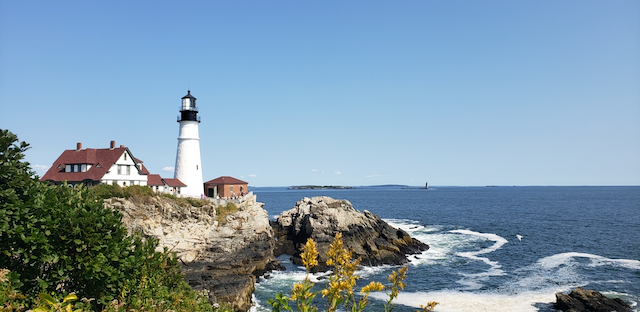
Witch Hollow Farm, Boxford, Massachusetts
Our pilgramage to Witch Hollow Farm was the trip’s highlight for me and was the opposite of a tourist destination. Instead, we spent a reflective morning at a nature preserve. Witch Hollow Farm, as it is now called, was the oldest American home of my 9th great-grandparents, originally settled by the colorful Job and Mary Tyler. (Job’s personality is for another day). The property remained with his son and descendants of the Moses Tyler family (my ancestor’s brother) for many generations. An original barn is still stately after 300 years, a structure believed to predate the Colonial era home there now.
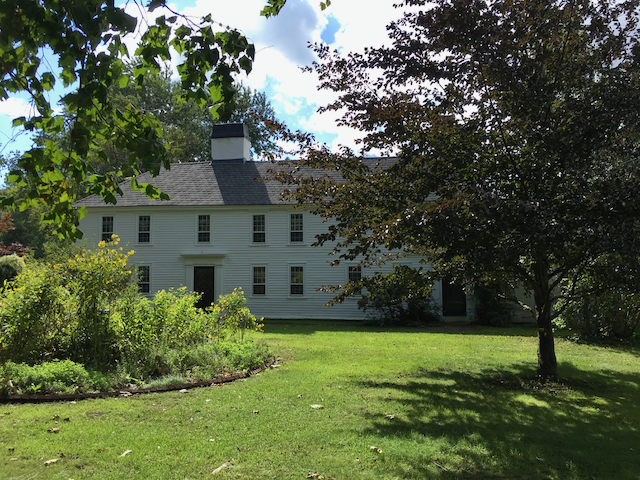
It is a quintessentially picturesque New England home, nestled next to a hollow (prairie meadow) ringed by oak, birch, and northern white pine. One family story said that the home’s walls were so dense they could only drill for electricity with great difficulty. I can surmise it was built of old-growth white oak found on the land, the same species that built the U.S.S. Constitution, or Old Ironsides.
Today, Witch Hollow Farm is a nature preserve that provides abundant habitat for wildlife and pollinators. I felt a great sense of peace there, and also excitement to stand where my 9th great-grandfather and his wife first built a cabin after arriving from England during the Great Migration. Their progeny have done a marvelous job documenting the genealogy in bound volumes naming over 3,000 descendants. These books show deeds, probate, and other vital records to prove the trail. This work is something to behold and imbues me with gratitude for the meticulous genealogists who did all that fact-checking.
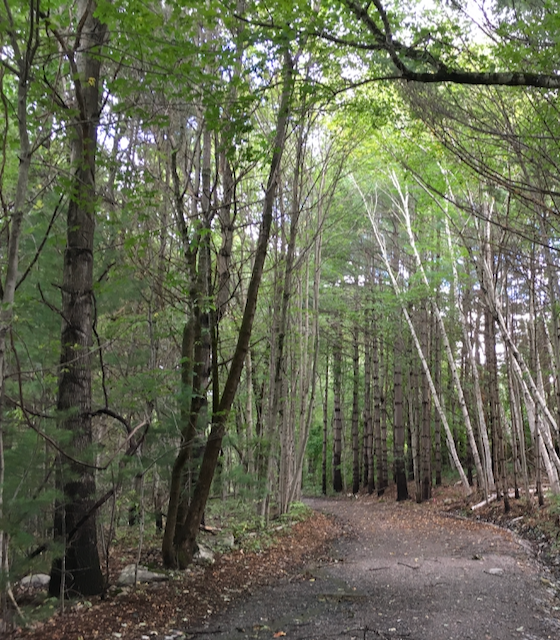
Article: Saving the Tyler Homestead (Boxford House)
Curiously, it’s a line that I only became aware of recently because my lineage back to the Tylers consists of an unbroken chain of mothers and daughters. In other words, mine is a direct matrilineal line the whole way. Because the surnames change every generation, it was hidden in plain sight. However, that special thread of matrilineal DNA, which mutates little from generation to generation, is within me. I call these women my chain of mothers. The second mother in this American chain married a Tyler, so thenceforth we all have a bit of Tyler.
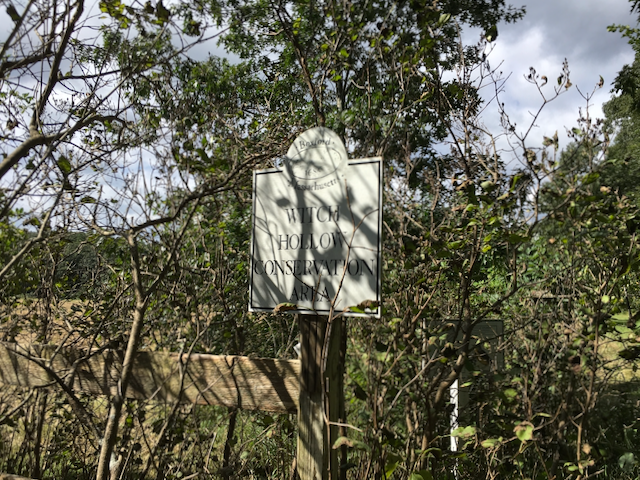
It was tracing my mothers (after a tip from my niece) that led me to the tragedy that once unfolded on that land, giving it the name Witch Hollow Farm. It is called that because there were so many accused and accusers living there or nearby. The hollow was where Mary Tyler (Post) Bridges (sister to my ancestor John) had supposedly been bewitched. One of the afflicted girls, Martha Sprague, was living there in the home of her stepfather Moses Tyler when she fell into fits. The original home, since replaced by the newer one, was named the witch trials testimony as where some supernatural acts occurred. For example, spirits were said to have made Martha sing and dance there all night until she was almost dead with exhaustion.
As I mentioned, the person who Martha accused of betitching her was my 9th great-grandmother, Mary Ayer Parker, one of the 19 people hanged. Mary was the mother of John Tyler’s wife Hannah. Mary Parker’s crime was that she would not confess, which all but ensured her an expedited death. The world had turned topsy-turvy. Much has been written elsewhere, so I will be brief today.
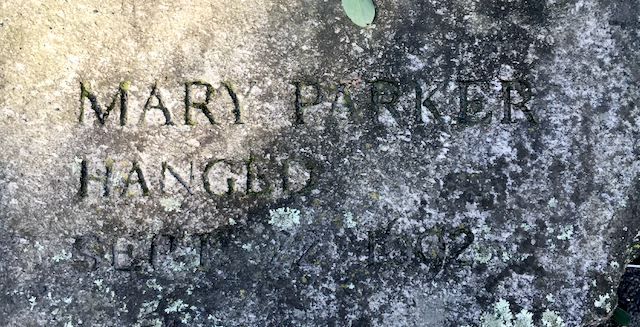
Suffering in Silence
What I want to focus on is the weighty realization of how embroiled my family was. Many of the women and teenage girls in that family were thrown into dungeons in unspeakable conditions. Mary died for it. Those who confessed and named others were marked by guilt the rest of their lives.
Daughter Hannah Parker Tyer saw her mother Mary hanged while Hannah’s daughter Bethiah was still at Hannah’s breast. Mary, Hannah, and Bethiah are all my direct mothers. I can’t begin to imagine how their hearts must have broken. How much trauma was stuffed away and never spoken of after that? As far as I know, the story was not told to descendants in my line, at least not within living memory. When did they stop speaking of it?
When I started teaching about writing sensitive subjects, trauma, and other difficult family history, I never imagined I would discover this.
After the hysteria quelled, Hannah Parker Tyler and her husband, Deacon John Tyler, left that place for the frontier. Subsequent generations moved farther and farther west, ever in search of land and religion.
How would I feel going to a place of familial trauma?
In going to the farm where so much trauma occurred, I wasn’t sure how I would feel. Ominous? Off-kilter? Heavy? The home is said to be haunted (people do love a good ghost story). Would I sense anything untoward?
The answer was that I felt peace. Time heals. There was something about those stately oaks that outlast their human neighbors—royalty among trees. They stood in a circle around the hollow, seeming to put our dramas in perspective. It was the same feeling I get when I’m staring at the sea, gazing at the stars, or sitting in the red-rock canyon walls of Utah. These are places of old, vast wisdom that transcends human folly. These places remind me of the words mother so often said, “This too shall pass.”
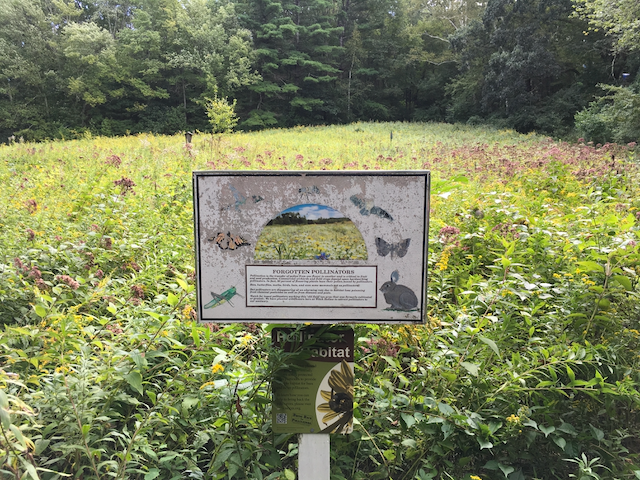
The only souvenirs I wanted from the trip were a handful of chubby acorns. I stuffed some into my pockets and will plant them with my daughter as a symbol of rebirth and healing.
Some stories take time to unpack
Over the last two years, I’ve spent countless hours tugging on this thread, researching, and writing thoughts about this family saga. It is unfolding in due time, and it is not done with me yet. This journey began when I was 16 without me even knowing it. My brother and I were traveling and happened upon the very towns where Mary Ayer Parker lived through her life and where she died: Salisbury, Haverhill, Andover, and Salem. We felt a strong ping of recognition without knowing why.
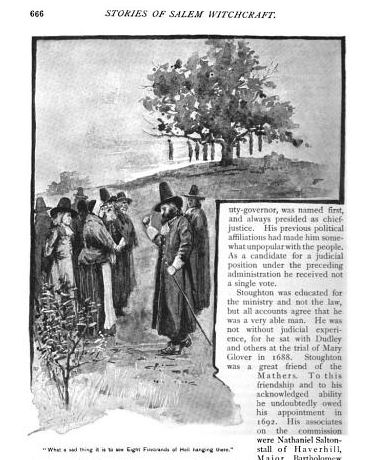
I am reminded of a comment made by colleague and photographer Amy Jorgensen of GranaryArts that has stuck with me. “I think sometimes the long-term projects are the most interesting.”
Also, I am grateful to and highly recommend Richard Hite’s wonderful history of the less-known saga that unfolded contiguously in the Andover. In the Shadow of Salem: The Andover Witch Hunt of 1692
Side note: Salem is a gimmicky tourist trap and I felt nothing there but “get me out of here.” I always get that way when people are laughing and taking selfies in somber places. I find that even lively tourist centers feel contrived and devoid of a soul. Even majestic landscapes can feel like “meh” when people can’t shut their traps for a moment and take it in. The real history wasn’t in the gift shops of Salem. I wouldn’t find my ancestors there.
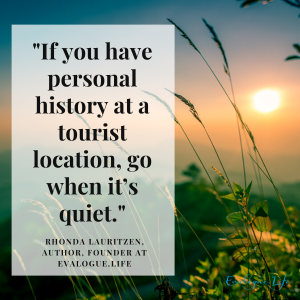
Thoughts and resources
Here are some thoughts and resources before visiting an ancestral home or place of historical significance to you:
- Take everything you read with a grain of salt. People often stuff from the same incorrect source, and myths perpetuate. I can’t tell you how many times I’ve seen that related to this project.
- Do as much of your own research as you can, paying attention to primary sources so you can spot inaccuracies in other people’s work.
- Check back from time to time because new sources can emerge. People are digitizing their collections, and new work emerges. For example, while so much has been written about Salem, Richard Hite’s thorough treatment of the Andover hysteria filled in a needed gap. His work added much to my family’s previous research.
- Give yourself time to mull over what a story means to you. The theme of what you want to say may not emerge at first, and untangling your thoughts takes being with it for a while. There is much on this topic I am not ready to write.
- Here is my article on how to research the history of buildings and places: https://evalogue.life/researching-ancestral-homes/
- Here is Rachel Trotter’s article on the power of place: https://evalogue.life/power-of-place/
- Watch for developments in the world of DNA in the coming years to validate (or disprove) the prior paper trail.
- If you have personal history at a tourist location, go when it’s quiet. I have found monuments and national parks to be an entirely different experience in the off-season, in cold weather, and at night.

Rhonda Lauritzen is the founder and an author at Evalogue.Life, where we tell personal and family stories that inspire. (Let us help you tell yours!) Rhonda lives to hear and tell about people’s lives.
P.S. This is a blog article and not a scholarly work so I have not properly cited all my sources. I am working on a more comprehensive history related to this story, although I will probably never be an expert. When I publish, I’ll share the extensive bibliography I’ve researched. If you have questions or corrections in the meantime, please reach out to me: https://evalogue.life/contact-us/


